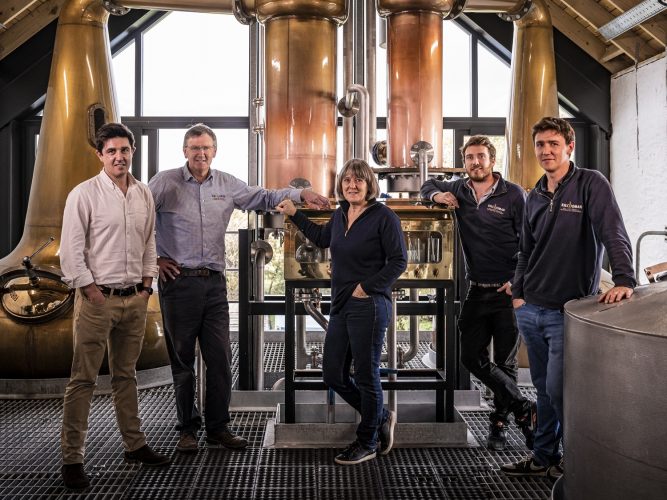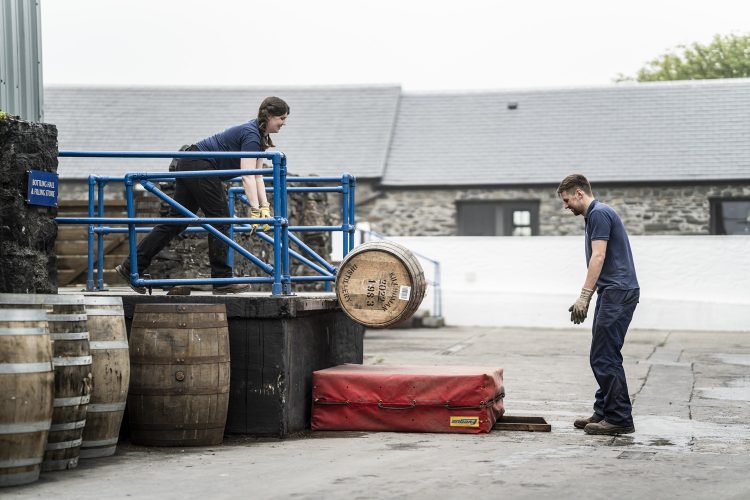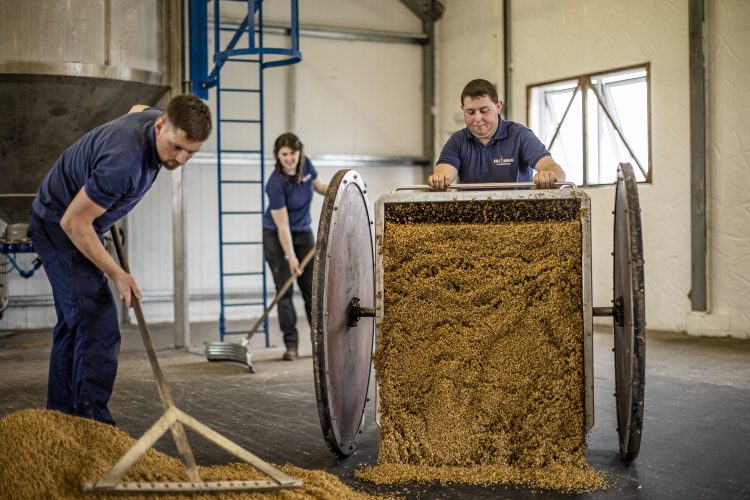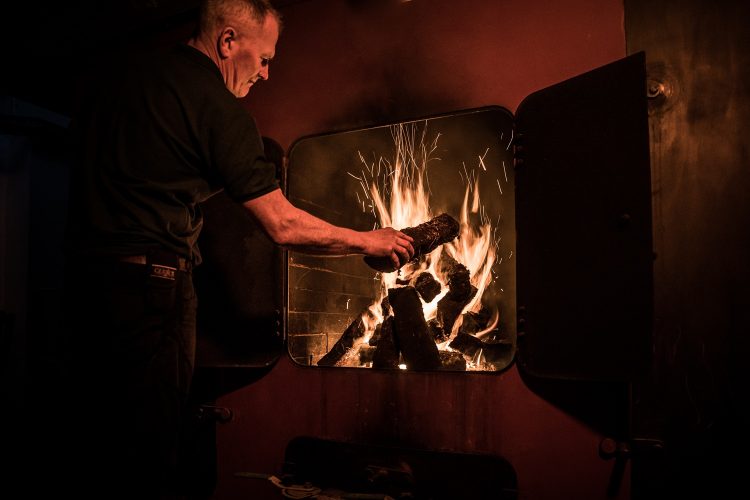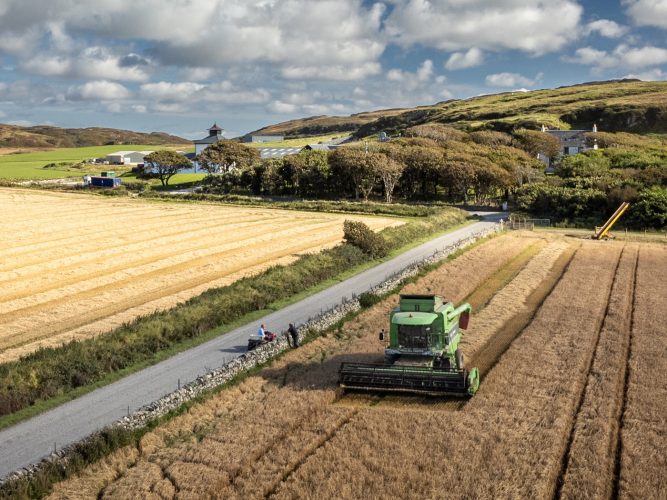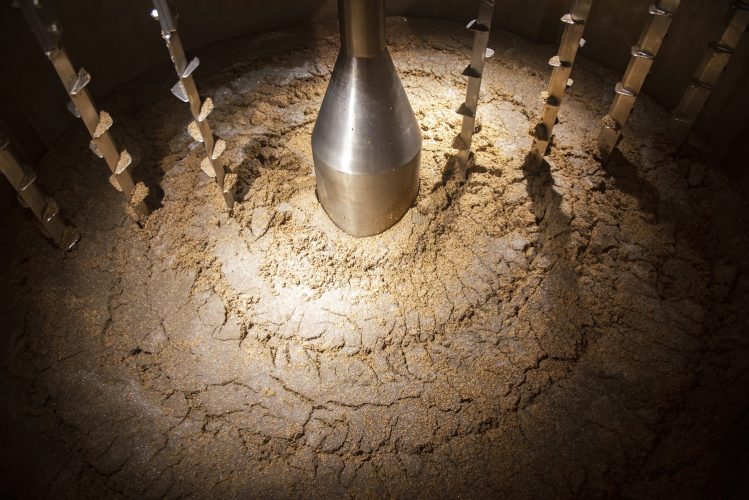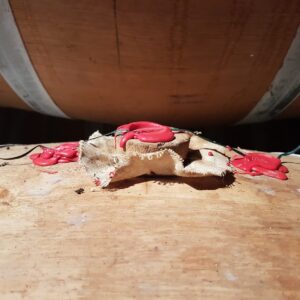A tour at the Kilchoman distillery on Islay
Γιαννης Κοροβεσης•Articles
This post is also available in: Greek
*AI translation
Touring one of Islay’s newest distilleries: Kilchoman, the first built after 1908 and a true farm-to-bottle operation
The memories from our recent trip to Scotland — and to Islay, the whisky-lover’s island paradise — are still fresh. Among the distilleries my travel companion, Ioannis Ekaterinidis, and I decided to explore was Kilchoman. Though it doesn’t boast a long history — it was founded in 2005 — it offers a wealth of unique selling points for both writers and whisky aficionados around the world.
The location
Kilchoman Distillery is located in the western part of Islay, about 25 minutes from the island’s capital, Bowmore, and roughly a 15-minute drive from Bruichladdich Distillery. It was built next to Rockside Farm, between Loch Gorm and the Kilchoman Military Cemetery — a historic local landmark. The cemetery is the final resting place of around 400 American servicemen who drowned in 1918 when a British ship transporting them to Europe sank during a violent storm in the Hebrides archipelago. The site is marked by rows of large stone grave markers, many decorated with traditional Celtic symbols — one of which adorns the Kilchoman whisky bottles as the brand’s logo.
Within the cemetery grounds lie the ruins of a 13th-century medieval church, dedicated to the Irish bishop and later saint, Commán of Roscommon. It’s worth remembering that the area the Romans once called Scotia referred not to Scotland, but to Ireland, and more broadly to lands inhabited by Gaelic-speaking peoples, including the kingdom of Dál Riata — modern-day western Scotland. The name Kilchoman comes from the Gaelic phrase Cill Chòmhainn, meaning “the church of Saint Comman.”
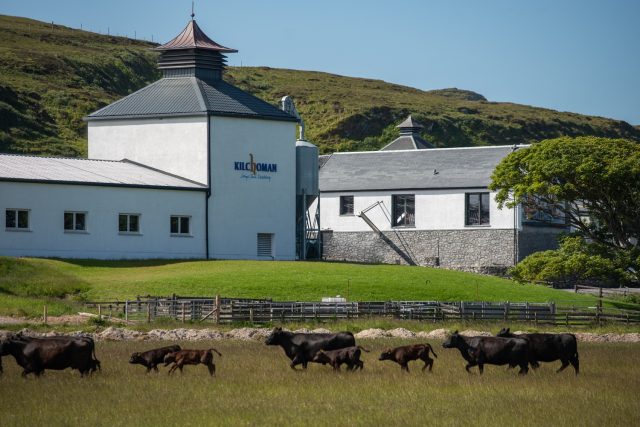
The Kilchoman team
From its conception and creation to its day-to-day operations, Kilchoman Distillery has remained independent and, essentially, a true family affair. It was built in 2005 by Anthony Wills — who also serves as the brand’s master blender — and his wife, Kathy. Later on, their sons came aboard the Kilchoman ship, which had already proven to be a sturdy vessel, ready for big voyages. They now represent the distillery’s second generation.
Kathy Wills owned a farm on Islay, while Anthony brought his background in the drinks industry as an independent bottler. Following a successful fundraising campaign, they managed to bring Kilchoman to life, and distillation began in 2005. It’s even rumored that the late Dr. Jim Swan, the legendary whisky consultant, was involved in the early days, offering his invaluable expertise.
One of Kilchoman’s key differentiators — not just compared to most Islay distilleries but across Scotland — is its farm-to-bottle philosophy. This means that all stages of production, from barley cultivation to bottling, take place on-site at the distillery. Granted, this applies to just under 20% of their total output — but the intention, philosophy, and approach are what truly matter.
The leadership team also includes Robin Bignal as production manager, and Islay Heads — yes, that’s his real name — as general manager. Could there be a more perfect name for a local from Islay?
During our visit, we also met Catherine MacMillan, Kilchoman’s global brand manager, whom I had previously met a few months earlier in Athens.
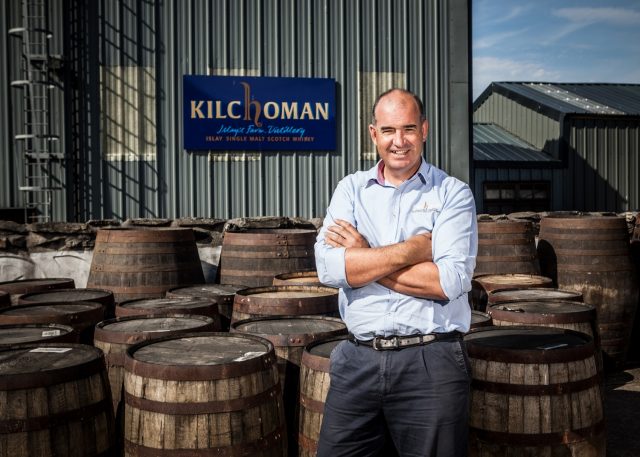
Ο Islay Heads
Kilchoman’s farm-to-bottle philosophy
Kilchoman wasn’t the first distillery Ioannis and I visited, but it stood out thanks to its unique location. Its facilities were clearly modern yet thoughtfully designed — featuring a superb tasting room, a spacious and elegant shop, and an enthusiastic team of smiling guides who made the experience all the more enjoyable.
Undoubtedly, Kilchoman’s production method is deeply rooted in the authentic tradition of Scotch whisky — echoing a time long past when nearly every farm had its own still. In a good year, Kilchoman’s privately owned 2,000-acre farm yields around 440 tons of barley, primarily from the Diablo and Laureate varieties, but also including Sassy, Concerto, Optic, and Publican. The farm is also home to Aberdeen Angus cattle and Blackface sheep, which are partly fed on draff (the spent grain left after mashing) and malt husks — the by-products of the distillery’s own production process.
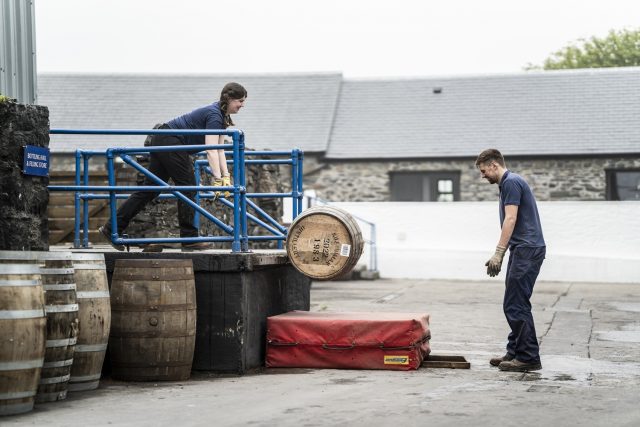
Each autumn, following the harvest, the barley is transferred to Kilchoman’s own floor malting facilities, where it is processed manually and used to cover around 15–30% of the distillery’s total malt needs. The barley is steeped in water, spread out across the concrete floor of the malting room, and turned with shovels at regular intervals as it germinates — until the malting process is complete.
The resulting malt is then moved to an adjacent kiln, where it’s dried over a peat fire using peat sourced from the island’s very own bogs. The peated character of the spirit produced from this batch — one of Kilchoman’s two distinct distillates — is relatively mild, with phenol levels at around 20ppm. The kiln’s chimney, built in the traditional pagoda shape, is one of the first things visitors notice as they approach the distillery. It’s worth noting that very few distilleries on Islay still operate their own floor maltings and kiln: Kilchoman, Bowmore, and Laphroaig are the main ones — unless I’m forgetting another.
Kilchoman’s second distillate comes from heavily peated malt sourced from external suppliers — usually Port Ellen’s malting floor — with phenol levels around 50ppm. This spirit is noticeably bolder in character and is primarily used in the brand’s core range bottlings.
Once malted, both types of barley pass through a traditional Porteus mill, which grinds them into grist. The grist is then sent into two small mash tuns, each with a capacity of 1.2 tons. Typically, each tun is dedicated to a different type of malt. The water used in the process is drawn from the Allt Gleann Osamail burn — a small stream flowing through the Osamail valley.

Το mash tun
Fermentation time
Fermentation at Kilchoman takes place in small stainless steel washbacks. Until 2019, there were four, but following the expansion completed that year, six more were added — each with a capacity of around 6,000 liters. Naturally, they’re not filled to the brim; space is left to accommodate the bubbling of the fermentation process, which lasts between 85 and 90 hours — neither especially short nor particularly long. The yeast used comes from Pinnacle.
As is the case in most distilleries, distillation is carried out in pairs of stills — two in Kilchoman’s case. The first still distills the fermented wash, and the second handles the low wines from the first run. Here too, the stills are very small — possibly among the smallest in the entire industry, and certainly the smallest on Islay. The wash stills hold 3,000 liters, and the spirit stills just 1,600 liters.
According to our guide, their design aims to maximize copper contact during distillation: the stills have narrow necks and bulbous bases, which promote reflux and help heavier, oilier compounds fall back down, refining the spirit’s profile. From a fermented wash with an alcohol content of 6–8%, the first distillation yields low wines at around 25% abv, while the second run produces new make spirit at approximately 69–70% abv. During our visit, we were lucky enough to sample the new make — not at full strength, but at the cask filling strength of 63.5%. We found it outstanding.
The vast majority — around 80% — of the barrels filled with Kilchoman’s new make are 200-liter ex-bourbon casks from Buffalo Trace. The next most common type are ex-sherry casks sourced from Bodega Miguel Martín in Jerez. Beyond these, the distillery also holds a smaller number of ex-Sauternes, red wine, rum, Port, and Cognac casks, mostly used for limited releases.
Most of the brand’s warehouses are traditional, low dunnage warehouses, with earthen floors and stone walls, capable of storing up to 15,000 casks. After the necessary maturation, the whiskies are blended under the supervision of Anthony Wills and bottled on-site at Kilchoman’s own bottling line — typically at 46% abv for the core range. Naturally, the whiskies are non-chill filtered and contain no added caramel coloring.
Following the distillery’s expansion, Kilchoman now has an annual production capacity of 640,000 liters of pure alcohol.
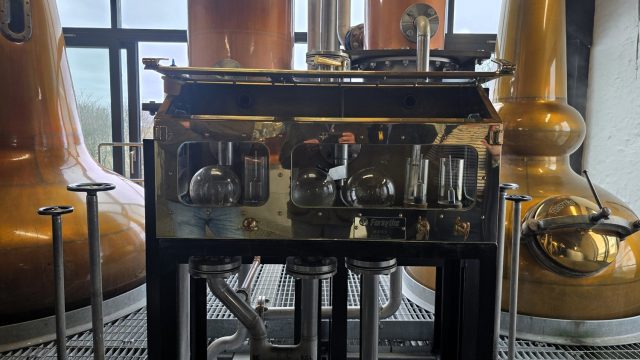
The flavor profile of Kilchoman single malts
Although Kilchoman is still in the relatively early years of its operation, the quality and balance of its new make spirit — which we had the chance to taste — speaks volumes. The distillery has already earned a reputation for being consistent, reliable, and producing whiskies with distinctive and flavorful profiles.
Most Kilchoman whiskies are robust and fairly peaty, yet they manage to showcase a unique signature character, rich in fruity and floral notes that stand out through the smoke.
Among the distillery’s flagship bottlings are the well-known Machir Bay, the sherry-forward Sanaig, and the 100% Islay expression, which follows the full farm-to-bottle philosophy — every step from barley cultivation to bottling is carried out on-site.
In recent years, Kilchoman has also introduced batch strength releases, and over time, they’ve launched several vintage-dated bottlings, along with special editions aged in alternative cask types.
Naturally, as time goes on, older whiskies will become more common in the lineup. In fact, a 13-year-old single malt was recently released, and at this year’s Feis Ìle festival, several long-aged expressions are set to debut — including an 18-year-old!
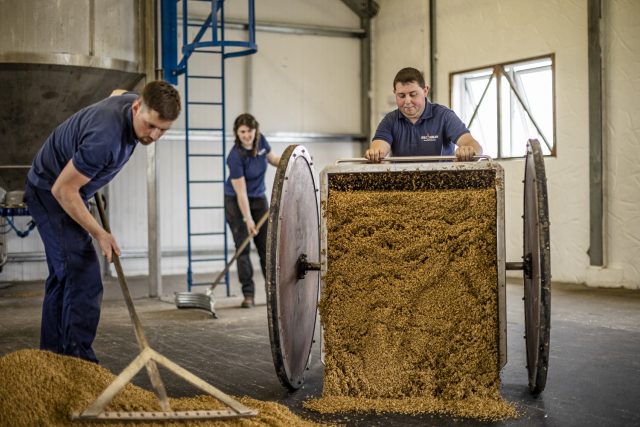
Στο malting floor του Kilchoman
Why visit Kilchoman?
If it were up to me, I’d say you should visit every distillery on Islay. Each one has its own unique charm and something special to offer — unforgettable sights, aromas, and flavors to intrigue even the most seasoned whisky lovers. But Kilchoman, in particular, stands out. As a farm distillery, it offers a rare opportunity to explore every single step of whisky production — proving that a distillery really can oversee the entire process from grain to glass.
You’ll get to witness the traditional floor malting and its various stages, see how the barley is worked and transformed from start to finish, and if you’re lucky, you might even catch the peat kiln in action, filling the air with the earthy aroma of phenols. Of course, you’ll also dive deep into the secrets of fermentation, distillation, and maturation.
On top of that, the visitor centre is a real gem. You can sample the distillery’s entire core range, and if you opt for one of the more in-depth tour experiences, you’ll get to taste exclusive bottlings — some of which are available only on-site.
We left Kilchoman full of experiences, vivid images, and the lingering taste of their whiskies — including one of this year’s Feis Ìle festival releases — on our palates. We were certain that Kilchoman is destined to become one of the standout names on the Islay scene. The vision of its founder and his family is simply too strong to be lost in the vast world of Scotch single malts.
Fortunately, Kilchoman is available in the Greek market, imported and distributed by Tsaknakis SA, and can be found in well-stocked liquor stores, restaurants, and bars. If you haven’t tried it yet — now’s the time to seek it out.



